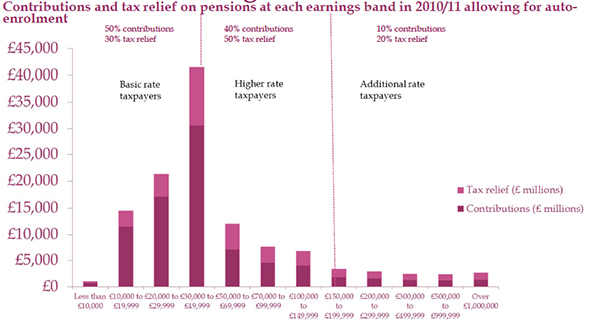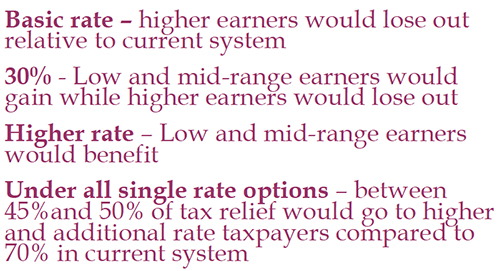Nobody understands it. It gives the greatest benefit to the wealthy. And it simply is not working as an incentive to get people saving into a pension. We are, of course, talking pensions tax relief.
This indictment is not new, but the issue has been edging up the political agenda and as the 2015 general election campaign kicks off, pensions minister Steve Webb will see it as a key piece of unfinished business ahead of a possible departure in May.
The sense in offering tax relief is threefold: to incentivise workers and employers to contribute to a pension; to compensate people for locking away their cash; and to ensure they do not pay tax on the same income twice.
But the tool has often been criticised for being too complex – no matter how sweet the deal – and for delivering the greatest benefit to higher earners.
This indictment is not new, but the issue has been edging up the political agenda and as the 2015 general election campaign kicks off, pensions minister Steve Webb will see it as a key piece of unfinished business ahead of a possible departure in May.
The sense in offering tax relief is threefold: to incentivise workers and employers to contribute to a pension; to compensate people for locking away their cash; and to ensure they do not pay tax on the same income twice.
But the tool has often been criticised for being too complex – no matter how sweet the deal – and for delivering the greatest benefit to higher earners.
The wealthiest cream the biggest rewards…
 Source: PPI: Tax relief for pension saving in the UK
Source: PPI: Tax relief for pension saving in the UK
At several speaking engagements over the past couple of months, Webb reiterated the need in his view for a flat rate of pensions tax relief, which could redistribute the Treasury’s spend more equitably among the richest and poorest savers and subsequently make pension saving more attractive for lower and median earners.
What’s not to like?
The Pensions Policy Institute ran some research in 2013 testing the financial and behavioural impact of tax relief under various possible scenarios.
Webb and others have been drawn to the halfway-house flat rate of 30 per cent, which the PPI's research showed would be fairer and could better engage savers.
Winners and losers at different tax relief levels…
 Source: PPI: Tax relief for pension saving in the UK
Source: PPI: Tax relief for pension saving in the UK
Webb said at an event in December that he even suspects “a future government will want to go below 30 [per cent]”.
It’s a delicate metric given the government’s total pension tax relief spend is currently around £35bn a year.
And as we all know, the pensions landscape looks a lot different now to that of 2013; the rationale behind either the level or the shape of the rate mechanism may have been upended completely by the Budget.
The PPI is all too aware of this and has confirmed it is hoping to carry out further research in the new year to help answer some of these questions.
Where next?
The idea of pension tax reforms seems to have gained traction with both Nick Clegg and shadow chancellor Ed Balls, putting them squarely on the same page on at least one policy should the two parties form a coalition in May.
So how exactly do the Budget reforms change the overall effect of tax relief, especially given we now have to also take into account whole-of-life DC products that might complicate the tax relief journey further?
A flat rate could hurt higher earners in at least two other ways to the Labour proposal outlined above, namely: a lower rate of tax relief when paying in, plus the possibility they may end up paying the higher rate of tax when they come to take that money out.
This means the third tenet in the pensions tax relief rationale could be jeopardised, as those savers would essentially be paying tax on (a proportion of) the same money twice – a move one industry expert described as "politically unacceptable".
But yet both Webb and shadow pensions minister Gregg McClymont have spoken of the need to get the bosses back into pension saving – though it's difficult to see how either one of them could conjure a disincentive into an incentive.
And when thinking across the spectrum of earners, how valuable a draw would a revision to tax relief be right now? Are auto-enrolment and the Budget reforms not incentive enough?
The key is fairness. That could come in the form of ensuring that whatever aggregate rate of tax relief you enjoy when paying in – which of course may vary over a person's working life – is mirrored when you get your hands on the cash.
Or more simply it could be the fairness of savers knowing they are subscribing to a pension saving system that isn't going to be reshuffled just as they start get their heads around it.
Either way, expect further talk on this subject as the year progresses.























